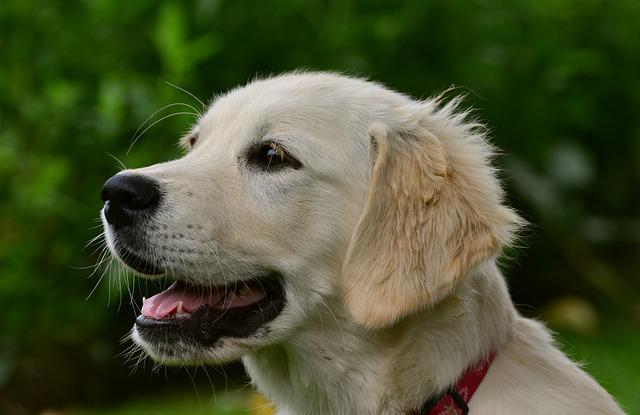There are many breeds of dogs that could be predisposed to inflamed and hardened gums. This is known as Gingival Hyperplasia. This issue causes pain for the canines that have it. The owner will obviously notice that the dog is not acting normal. Their eating may be lessened if they are eating at all.
Contents
Yet, there are many times that it is not noticed until the dog is having a routine examination at the vet clinic. The discomfort may vary, it will be based on the severity of the sores and lesions. Some dogs will have focal Gingival Hyperplasia, meaning just in one area. Others may experience the issue as generalized. This means it covers the entirety of the mouth and may possibly include the palate.
Causes

Gingival Hyperplasia is caused by dental calculus. The canine’s body will respond to this by producing extra collagen. This will in turn cause what appears to be scarring on the gums in the dog’s mouth. A pocket of sorts is formed in the gum line and this is where food, bacteria, hair, dirt and other unwanted germs begin to collect. The collection of the debris begins to continue the inflammation, leading to more pockets and further discomfort.
Certain medications are believed to lead to Gingival Hyperplasia. The medications include the calcium channel blockers, such as cyclosporine and amlodipine. There is a high amount of data to verify the gingival Hyperplasia stemming from the use of drugs such as cyclosporine. Gingival Hyperplasia is a known side effect of the drug. Your canine should be closely monitored when given the cyclosporine. Extra exams given by the Veterinarian would also be beneficial at this time. Phenytoin derivatives are also believed to play a part in causing Gingival Hyperplasia for canines.
The Gingival Hyperplasia could also be caused by abnormal cells that cause abnormal growth in the gums, leading to the excessive gum tissue. Some veterinarians tend to believe that this could also be a genetic condition. Most dogs will respond to periodontal disease with gums that recede. However, dogs with Gingival Hyperplasia respond to Gingival Hyperplasia, the gum cells increase and grow in response to the inflammation. As stated, it could be a response to certain medications also.
Diagnosis

As stated, in general, Gingival Hyperplasia will not be noticed until the dog is at a routine examination. The dog will generally give signals in regards to discomfort or pain. Unless the dog owner is completing daily brushing and dental care of the animal, they may not notice the inflamed gums. The definitive diagnosis will come from Histopathology. The abnormal gingival proliferation is due to the increase of gingival cells. This is completely different from gingival overgrowth, where the cells become enlarged, but do not increase in number.
Histopathology is the only way to tell the difference between neoplastic and non-neoplastic oral diseases and Gingival Hyperplasia. In many cases, the evidence of Gingival Hyperplasia is obvious enough that treatment is begun at the same time as the Histopathology test is being performed.
It must be known that full mouth radiographs must be performed on all canines that are receiving treatment for Gingival Hyperplasia. A full mouth radiograph will assess the extent of, if any, of the jaw and the teeth. Gingival Hyperplasia is known to cover and hide some serious dental issues that may need extraction.
Sometimes, the Gingival Hyperplasia can resemble a mass or a tumor. This is why a radiography or biopsy needs to be done. This will diagnose the true condition that the canine is experiencing.
Treatment

In order to treat Gingival Hyperplasia, a surgical procedure is necessary. This procedure is done to remove any excess gingival tissue. A gingivectomy is done to bring back a normal contour and sulcus depth.
There are two methods of Gingivectomy, the Standard method. This one is considered the fastest. The other method is the Periodontal Flap Gingivectomy. The periodontal flap gingivectomy is usually done for canines that have widespread Gingival Hyperplasia.
The gingivoplasty is not a cure for the condition. The gum tissue could continue to grow over the lifetime of the dog. Dogs that are predisposed to the condition may need to have surgery again in the future. Continued dental care should be taken by the owner and routine vet visits should be made to be checked. Daily brushing will slow the growth of bacteria and plaque in those dogs where that is the cause. Although all dogs should be given routine brushing.
Standard Gingivectomy

This is not just considered the fastest, but also the easiest method. The main limitation with the Standard method is that the excess tissue is cut and will then require time to heal by second intention.
This is the best option for the canines that have small areas of Gingival Hyperplasia. For canines with widespread Gingival Hyperplasia, there is an excess of exposed tissue that will need to heal before any home care treatment can begin. This exposed tissue can lead to further blood flow and pain.
When the gingivectomy is to be done, they must perform a technique to ensure that the canine will heal properly.
- Measurements are taken of the affected areas and the periodontal pockets of each of the affected areas. The Specialist will leave approximately 3mm, of which 1mm will recede as it heals. This will leave an ideal 2mm pocket.
- The excess will then be cut away using radiosurgery or a scalpel, cutting at a 45* angle to the tooth. Extra caution should be taken if radiosurgery is used, to prevent any thermal damage to the bone or teeth.
- At this point, the tooth will be scaled and polished at the newly exposed areas of the tooth or teeth.
- To smooth the gum contour, use a high speed handpiece with a diamond taper or finishing bur.
- To control any bleeding, applying pressure with wet gauze will help.
Periodontal Flap Gingivectomy

For canine patients with more widespread gingival hyperplasia, the Periodontal Flap Gingivectomy will be used. The difference between the two is that this technique will use a flap to cover the area versus the open area that needs to heal by second intention. This technique is similar to that done for dental extractions.
- The area needs to be measured and marked first.
- Using a scalpel blade, begin with a beveled incision and then elevate the flap.
- Use the scalpel blade to remove the excess gingival tissue from around the tooth or affected teeth.
- Scale and polish the newly exposed teeth surfaces.
- Replace the flap and insert a suture to close.
The periodontal Flap Gingivectomy is used less often for the issue of Gingival Hyperplasia, it has proven to be beneficial in many cases.
Post Surgery Care and Treatment

This procedure is a painful process for the canine. The pain is not based on just one technique. In comparison, it is the same pain a human will feel when having serious dental work done. For this reason, the practitioner will use a balance between anesthesia and analgesics, which will include nerve blocks. When the dog is then sent home, the physician will send NSAIDs or pain pills home too.
Owners should remove any chew toys from the vicinity of the animal. The dog should also be given a soft diet for a period of time until full healing has taken place, or for a minimum of two weeks. There should also not be any hard treats given to the dog during the healing process.
Beginning at the two week period post surgery, the owner should begin brushing the dog's teeth daily, using cauton in the area of the surgery. Antimicrobial rinses should be given when possible.
Continued daily hygiene should be given daily for the remainder of the dog’s life. This allows for monitoring dental health and then removing the dental calculus.
Life and Management

If you are unable to do the dental cleanings, find someone that can do the cleaning for you. The dog will need to be checked routinely, just as humans are, but with the Canine Dentist. When routine cleaning is done, and a proper diet followed and given, the formation of Gingival Hyperplasia can be prevented in most dogs. Those that are predisposed may need further surgeries to keep the condition under constant control.
Either way, the canine will be able to live a long and healthy life. In general, the outcome is good. In the predisposed dogs, relapse can be common. If the condition continues to occur, the complications of deeper pockets will allow for increased bacterial growth in the gums and near the jawline. To reiterate, routine examinations are highly important, especially when the breed of dog is predisposed to the condition.
In summary, the surgery is the only way to help the affected dog become healthy once again. The surgery may seem high, if you have pet insurance, check with the policy and see if it is covered. If no insurance, find a charity animal hospital that may be able to help, or make payment arrangements to have the surgery completed.




